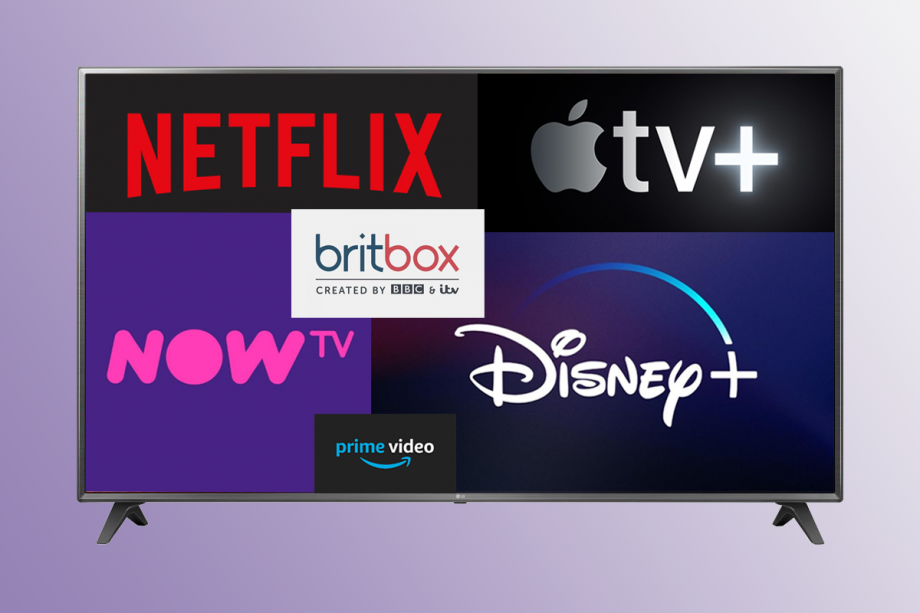The explosion of Netflix-wannabe streaming services will increase piracy − but what happens next?

Netflix, Amazon Prime Video, Disney Plus, Apple TV Plus, Now TV, YouTube TV, Mubi, Shudder, BFI Player, Crunchyroll, Hulu, BritBox, Peacock… the list keeps getting longer. Everyone who’s anyone wants a slice of the streaming pie, and together, they’re ruining it for consumers.
Multiple recent reports have now concluded that there are too many different streaming services, and the studios behind them are unintentionally going to drive more and more people towards piracy.
How to ruin a good thing
Netflix and Amazon Prime Video shot to prominence not because “Streaming = Good”, as all of these bandwagon-jumping media giants seem to think, but because people could find most of the films and TV shows they wanted to watch on one or the other, and many were happy to subscribe to both services, because it was affordable to do so and worth the money.
Things are completely different now. As more and more streaming services go live, existing services’ libraries get stretched thinner and thinner, and the content that consumers want to watch is scattered further and wider than ever before.
Most people can’t afford to pay for every streaming service, but even if you could, would you? Not only is it becoming increasingly expensive to watch films and TV shows in your own home, but it’s become increasingly difficult to actually keep track of which service they’re available on.
The 13th edition of Deloitte’s annual Digital Media Trends survey, which was published in March 2019 with a focus on the US market found that people are having to subscribe to three streaming services on average, in order to be able to watch the content they want to watch.
“Nearly one-half (47%) [of consumers] are frustrated by the growing number of subscriptions and services they need to piece together to watch what they want,” the report declared. “48% say it’s harder to find the content they want to watch when it is spread across multiple services. And even a major benefit of having multiple subscriptions − lots of great shows and movies − can be frustrating because consumers have difficulty discovering them.”
The report adds: “Few things frustrate consumers more than when shows disappear from libraries on streaming services … This is happening more frequently as more studios and TV networks are pulling content from the major streaming services to launch their own direct-to-consumer offerings.
“While consumers may sign up for a streaming service for its original content, having a broad library of shows and movies matters, too. As this library is thinned, the service loses some of its value, and consumers are either forced to add other services or to live without some of their favorites.”
Even when you do decide that a particular streaming platform is worth paying for, there’s no guarantee that you’ll actually be able to access it on your device. At launch, for instance, Apple TV Plus won’t be available on Amazon Fire TV devices, or LG, Roku, Sony and Vizio TV sets.
Meanwhile, pirate sites are growing increasingly slick. Andy Chatterley, the CEO of MUSO, believes that 60% of digital piracy will go to pirate streaming sites.
“These are not badly designed, shadowy websites; these are sites with user focused interfaces, excellent user experience, fast loading HD quality and, crucially, sites with everything available, for free and all in one place. It’s easy to see the appeal of all that value with no cost attached.”
TorrentFreak recently spoke to the operator of a UK-based pirate IPTV service, who said that BBC One, BBC Two, ITV, Channel 4 and Channel 5 − all of which are free to watch both on TV and online − are some of the most popular channels amongst those who pay for access to the service.
According to the operator, one of the reasons for this is that users “prefer the flexibility of being able to watch channels on any device they like, rather than being restricted to the platforms supported by various providers”.
And a subscriber added that “having everything in one place (a single IPTV subscription) is much more convenient than having to switch around various sources, even if that means paying a few pounds per month”.
Here’s the bit where we have to say that we do not condone piracy. However, somehow we’ve got to the point where some people believe that illegal services offer a superior user experience to legitimate services, and where pirating content can be simpler and more convenient than streaming it through big-name platforms. That’s astonishing.
The cost of a subscription is highly unlikely to come down anytime soon, either. On the contrary, Netflix recently inflicted its biggest ever price hikes on US- and UK-based consumers, raising prices by up to 20%.
In other words, streaming is becoming pricier and less convenient, and we’re all getting less value for our money. When consumers start feeling like they’re being taken for a ride, they’ll look elsewhere.
Related: Best Now TV Deals

Too many streaming platforms will fuel piracy − the evidence
Several studies have concluded that, following several years of decline, peer-to-peer file sharing is on the rise again, following years of decline. And they point to the same reason − growing fragmentation.
The most recent of these is Sandvine’s latest Global Internet Phenomena report, which was published on September 10.
“Last year, we reported that we saw an uptick in file sharing for the first time in many years,” the report reads. “Since we had a bit of a lapse in the reports between 2016 and 2018, and the dataset we were drawing on was a bit different, it was hard to give concrete proof. But this year, we have rock solid numbers that can’t be dismissed.”
It adds: “Last year, I made an assertion in the Phenomena Report that the reason we saw that uptick in file sharing was due to the beginning of the fragmentation of video streaming providers … more and more streaming services are launching and announced (like Disney+) that will continue this trend.”
You can access Sandvine’s 2018 Global Internet Phenomena report here. “Previous editions of the Phenomena report noted a decrease in file sharing traffic as Netflix and other streaming services came online, making content available through legal means. Well, that dynamic is changing yet again,” wrote Cam Cullen, Sandvine’s VP of global marketing, in a blog post at the time.
He added: “More sources than ever are producing ‘exclusive’ content available on a single streaming or broadcast service – think Game of Thrones for HBO, House of Cards for Netflix, The Handmaid’s Tale for Hulu, or Jack Ryan for Amazon. To get access to all of these services, it gets very expensive for a consumer, so they subscribe to one or two and pirate the rest.”
For further evidence, see the latest IP Crime and Enforcement report, which was published by the Intellectual Property Office on September 5.
“There … appears to be a resurgence in torrent traffic, notwithstanding the apparent demise of peer-to-peer file sharing a few years ago,” the PRS for Music section (on page 58) reads (via TorrentFreak). “A likely reason for this is the fact that more legitimate platforms are hosting exclusive content and subscribers may not necessarily have access to all the content they want to consume.”
Still not convinced? MUSO carried out a survey earlier this year, where 64.2% of respondents said they won’t pay for any more streaming services this year, 80.4% said they’re already paying too much for streaming, and 50.8% said they’d look for content on illegal platforms if it wasn’t available to them on services they were already paying for.
66% of the people surveyed said they pay under £30 a month for streaming services.
“Logic suggests that most households will likely limit themselves to one or two services depending on their circumstances and viewing habits,” MUSO CEO Andy Chatterley wrote in a blog post at the time. “It won’t just be based on cost – convenience will play a part too.
“It will be frustrating keeping up with all the different services, not finding the water-cooler show on the services you do have or not being able to access it because of geo windowing and other licensing restrictions that you as a customer do not particularly understand or care about.”
He added: “The arrival of more and more disparate platforms will simply herald an era of even greater fragmentation, and at the same time alienate a consumer who might otherwise be willing to pay for content simply because they cannot justify paying for yet another service when all they really wanted was one series or film.”

Image: TunnelBear
What happens next?
So what happens next? First in the firing line will be the operators of pirate sites and services.
One of the organisations that will be heavily involved is the Federation Against Copyright Theft (FACT), which has played a key role in numerous high-profile investigations over recent years.
“Consumers now have a superb and varied choice of ways to watch films and TV programmes legally, often bundled,” Eddy Leviten, the COO of FACT, told Trusted Reviews.
“This market has evolved as technology and consumer demand has developed and there has been a huge take up in the UK. Choice is important and consumers have these choices now. The market will continue to adapt.”
Sandvine’s Cam Cullen says content owners are showing signs of increased concern, but their crackdown attempts are being frustrated by VPNs.
“We are already seeing action and concern from the content owners trying to shut down piracy services through multiple channels,” he told Trusted Reviews. “Many of the piracy sites have been shut down but that has not been terribly successful overall, because they always find new content delivery networks for distribution and have robust mechanisms to stay alive.
“Content owners are also going after users with DMCA and the ‘three strikes’ guidance for ISPs, but that has not had a big effect other than serious pirates buy VPN services that hide them or do it from public locations – hotel, cafes, WiFi hotspots, etc.”
According to Sandvine’s 2019 Global Internet Phenomena report, VPN traffic is shooting through the roof.
“With the rising popularity of VPN services designed to hide consumer activities, the usage volume of VPNs has grown significantly,” the report reads.
“Any consumer that has received a DMCA notice from their service provider has quickly invested in a $5-$15 a month VPN service, and then tunnelled their file sharing (and sometimes ALL) traffic through the VPN. The performance of the VPN services has improved dramatically over the past few years to support location shifting of video streaming (to get around region locks for many streaming services) and also works well to hide file sharing activities.
“Some VPN usage is business traffic, as telecommuting and remote work is growing, but not nearly enough to account for this volume of traffic.”
Some platforms will inevitably fall behind the others and collapse. But that won’t happen for a good while, seeing as many of the companies involved are goliaths that can absorb losses, and/or pumped too much money into their platforms to see failure as an option.
We’re also likely to see more and more streaming services bundled together as part of the same television package. Others, such as the horror-focused Shudder, have or will find their niche, and will build a base of loyal fans.
MUSO’s Andy Chatterley believes that the best thing streaming providers can do now is actually tailor their services to meet consumers’ needs.
Something he’s suggested in the past is the switch to a much more flexible pay-as-you-go rather than all-you-can-eat plan that would enable viewers to “watch individual items legally for modest micro payments”.
Netflix is already experimenting with something similar in some markets. Last year, consumers based in Austria started seeing the option to pay €2.49 for a week of access to Netflix’s Basic plan. A week-long subscription to the Standard plan was priced at €2.99, while the Premium tier was available for €3.99 per week.
“Where we can get a very strong signal of intent is cancellation numbers, and correspondingly, piracy audience data as it shows high intent with little or no platform bias,” Chatterley told Trusted Reviews.
“It should also signal a warning bell for providers − your brand is both your service and its content. Ignore the quality of both at your peril − cancel culture is alive and well and going nowhere for now.”


